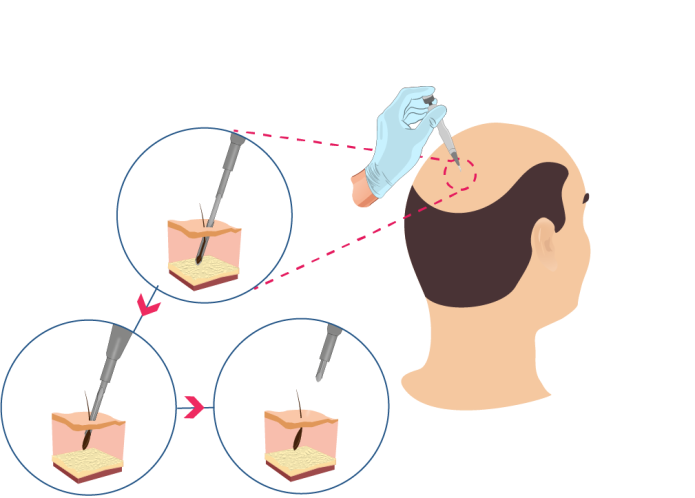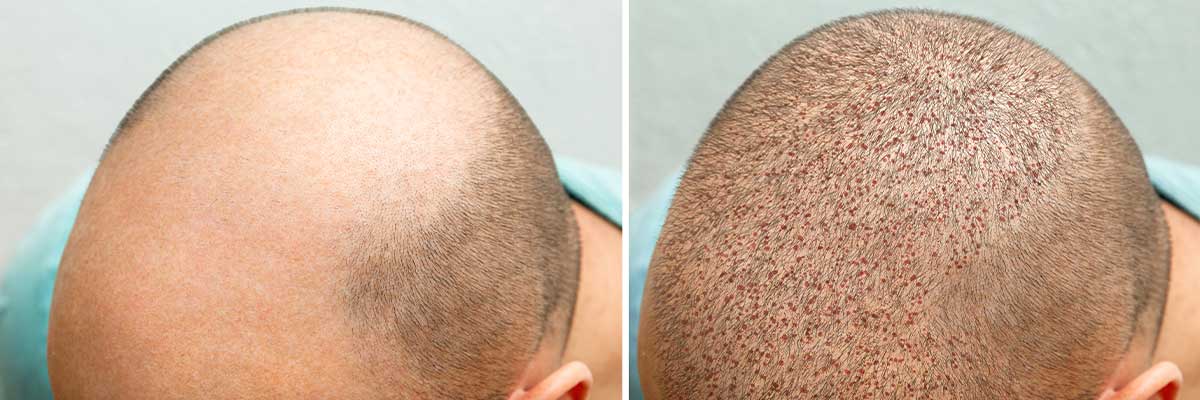Free Consultation Form
Hair Transplantation
Hair is an important part of appearance for many. Healthy and full hair can increase someone’s self-confidence and help create a positive image. In people who experience hair loss, dilution or baldness of hair can lead to loss of self-confidence and a negative image perception.
Hair loss can affect social interactions and relationships. One may feel different or excluded from other people due to hair loss. Hair loss can make it difficult to participate in social events or meet new people. Also, hair loss can create emotional effects in the person, such as depression, anxiety, and stress.
The important thing is not to allow people with hair loss to negatively affect this situation and seek a solution. Treatment methods such as hair transplantation can reduce the effects of hair loss and contribute positively to the person’s recovery.
Hair Transplant Procedure
Hair transplantation is a surgical process used to provide a permanent solution to people who have hair loss and baldness problems. In this process, a natural and permanent hairline is created by adding the solid hair roots taken from the hairy skin to the spilled and sparse areas.
Hair transplantation Methods

Hair transplantation with FUE Technique
In the FUE technique, hair roots are taken from hairy leather with individual microsurgery tools. Donor regions; Hair roots taken from the back or side areas of the nape are planted in the area to be transported. Since the FUE method has fewer incisions and interventions, the healing process is faster and does not leave permanent marks such as sewing marks.
Hair transplantation with DHI Technique
It is one of the hair transplant techniques and is a derivative of traditional FUE technique. DHI technique is an approach that allows direct hair follicles to be planted using a special device instead of channeling in areas where hair follicles will be transported.
With this technique, hair roots are carefully placed in areas that are balding or sparse in the receiving area. The main advantage of DHI is that hair follicles can be placed faster and more effectively, and hair follicles remain less on the outer side, which helps to make the transplanted hair follicles healthier.

What Are Things to Consider After Hair transplantation?
After hair transplantation, with proper care, the healing process can speed up and the loss rate of the planted hair can be reduced. Important points to consider after hair transplantation:
Rest and Minimum Movement
It is important to rest for the first few days after hair transplantation. Limiting physical activities and not exerting excessive effort can increase blood flow in the cultivated area and help the grafts settle successfully.
Protecting Hair Extended Area
It is important to protect the hair transplant from impacts and friction. You should avoid irritating the hairy area, especially in the early days.
Use of Appropriate Pillows
It is important to keep your head high while sleeping for the first few days, reduce swelling and regulate blood flow. For this reason, you can make pillow arrangements to support the transplant area.
Regular Medicine Use
You should regularly use the medications your doctor has prescribed. These drugs are given to reduce the risk of infection and to speed up recovery.
Preventing Itching
The feeling of itching after hair transplantation is normal, but you should definitely avoid scratching the hairy area. This can cause the planted grafts to fall or be damaged.
Careful Hair Washing
After hair transplantation, you should be careful about washing and shampooing hair for the time determined by your doctor. Usually, hair washing can be avoided for 2-3 days after planting, or special instructions should be followed.
Avoiding Alcohol and Cigarette Use
It is important to avoid alcohol use and smoking after hair transplantation. This can negatively affect the healing process.
Regular Doctor Control
After hair transplantation, you should regularly perform the checks determined by your doctor. This is important to follow the recovery process and make the necessary interventions.
The full recovery process after hair transplantation may vary from person to person, but usually within a few weeks the area where hair is planted returns to normal. Following your doctor’s recommendations and being careful throughout the healing process can affect the success of the results.
Remember that everyone’s needs after hair transplantation are different, so it’s best to follow your doctor’s instructions for you.

Does Hair Transplant Have Side Effects?
Hair transplantation is generally considered a safe process, but as with any surgical procedure, it can have some side effects. Many of these side effects are temporary and mild, and not a problem for most people. Some common side effects that can be seen after hair transplantation; swelling and bruises, pain and discomfort, crusting and shedding, itching, infection, hair shock shedding.
The specified side effects create mild temporary problems in most people and often improve spontaneously. However, in case of serious or prolonged side effects, you should contact your doctor immediately. Hair transplantation should be done by a specialist doctor or surgeon, and the healing process should be under regular follow-up.
How Is The Hair transplantation Success Rate?
Hair transplant success rates may vary depending on the techniques used, the surgeon’s experience, the patient’s hair loss and other factors. Generally, hair transplantation success rates are quite high and the process often yields successful results. However, it is difficult to give a specific statistic to clearly determine the success rates, because the situation of each individual is different
What Are Factors Affecting Hair transplant Success?
Hair transplantation Method Preference
Different hair transplantation methods such as FUE and FUT can be used. FUE is usually a more common and preferred method because it is less invasive and less likely to leave a mark.
Surgeon’s Experience
The surgeon’s experience and expertise in hair transplantation is an important factor affecting the success rate. Performing an experienced and expert surgeon can help achieve better results.
Donor Area Quality
The quality and intensity of the donor area where grafts are taken for hair transplantation can also affect the results.
Care After Hair transplantation
Proper care after hair transplantation and compliance with the doctor’s recommendations can positively affect success rates. Hair planted after hair transplantation is poured first, and then new hair comes out naturally. When this process is completed, results that often appear permanent and natural are obtained.
Still, while it is difficult to give a precise number about hair transplant success rates, collaborating with a good hair transplant clinic, Choosing an experienced surgeon and adapting to your doctor’s instructions before and after treatment are important steps to achieve successful results.
| QUESTIONS | ANSWERS |
|---|---|
| Operation Name | Hair Transplantation (DHI TECHNIQ) |
| Hospital Stay | 0 Day |
| Stay in Turkey | 3 Days |
| Operation Price | Contact Us |
| QUESTIONS | ANSWERS |
|---|---|
| Operation Name | Hair Transplantation (FUE SAFİRE) |
| Hospital Stay | 0 Day |
| Stay in Turkey | 3 Days |
| Operation Price | Contact Us |